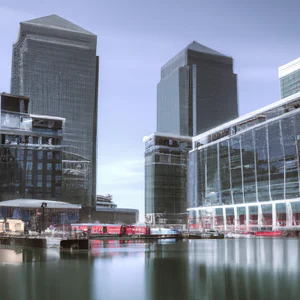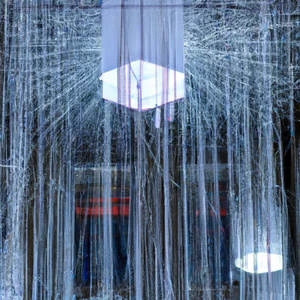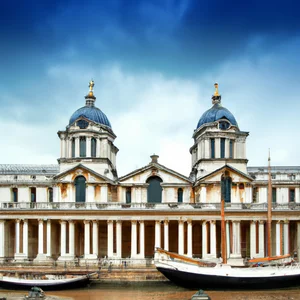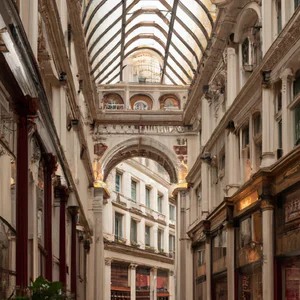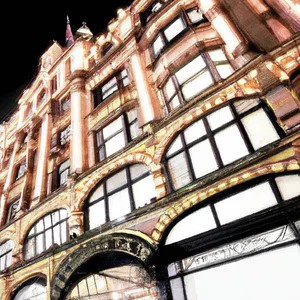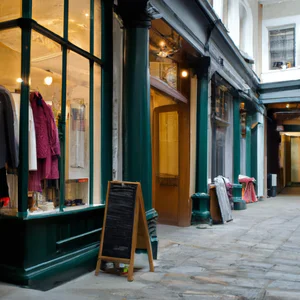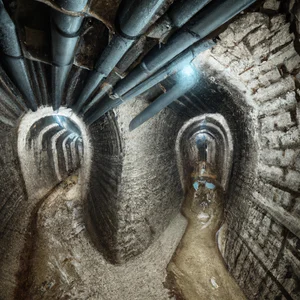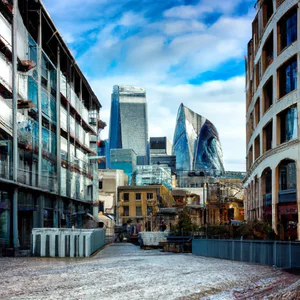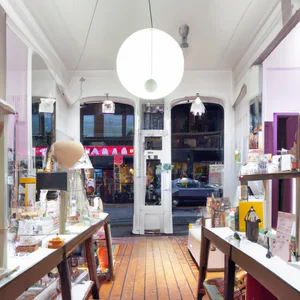Book your experience
Marylebone: Victorian charm and luxury boutique in the heart of London
Marylebone, guys, it really is a place that makes your heart beat! It’s like a perfect mix of the old and the new, with that Victorian charm that embraces you as soon as you set foot in the area. Do you remember when I took a tour there last year? Here, among the cobbled streets and those beautiful red brick houses, it seems like going back in time, but with a touch of modernity that never hurts.
And then the boutiques! Oh, let’s not talk about those! It’s like each store is a little gem, full of cool and, let’s be honest, a little expensive stuff. But who doesn’t love taking a stroll among designer clothes and shoes that shine like stars? Of course, you can’t go there every day, but every now and then it’s good to pamper yourself a little, right?
In short, Marylebone is that place where you can sit in a café, perhaps with a cappuccino in hand and a slice of cake, and simply watch the world go by. I don’t know, but it makes me feel alive, as if every corner had a story to tell. It’s a bit like when I was a child listening to my grandmother’s stories, full of adventures and mysteries.
In any case, if you’ve never been there, I highly recommend you check it out. Maybe it won’t be your cup of tea, but, who knows? You might discover a corner that wins you over! Sometimes, I think places are like people: they would always surprise us if only we had the courage to explore them a little more.
Victorian architecture: the charm of Marylebone
A close encounter with the past
I still remember the first time I set foot in Marylebone. As I strolled along its cobbled streets, I was enchanted by the magnificence of its Victorian facades, painted in pastel tones that seemed to tell forgotten stories. One of the most memorable moments was when I stood in front of Marylebone Church, with its intricate architectural details rising beneath a blue sky. I felt a shiver, as if I had been catapulted back in time. This is the power of Victorian architecture: it is a bridge between the present and an era when design was not only functional, but also deeply artistic.
Discover architectural beauty
Marylebone is a veritable treasure chest of architectural jewels. Its streets, such as Baker Street and Marylebone High Street, are lined with beautifully preserved buildings that date back to the 19th century. The terraced houses with their colorful doors and manicured gardens offer an enchanting atmosphere. Don’t forget to visit Regent’s Park, where the beauty of the landscaped gardens combines harmoniously with the surrounding historic buildings. According to the London Parks and Gardens Trust, this park is a perfect example of Victorian landscape architecture.
An insider tip
If you really want to immerse yourself in Marylebone’s Victorian architecture, I recommend booking a guided tour with a local expert. Some tours, such as those offered by London Walks, include anecdotes and stories that you won’t find in guidebooks. You may find that a building’s facade hides fascinating secrets, such as the origins of particular decorations or the historical importance of a former resident.
The cultural impact of architectural beauty
The architectural beauty of Marylebone is not just a pleasure for the eyes; it also influenced local culture. In the 19th century, the area became a center for artists, writers and intellectuals who sought inspiration in its picturesque corners. Today, this heritage lives on through art galleries and creative studios that dot the neighborhood, making it a crossroads of creativity and innovation.
Responsible tourism practices
As you enjoy the beauty of Marylebone, consider the impact of your stay. Many local shops and cafes engage in sustainable practices, such as using recycled materials and farm-to-table ingredients. Choosing to support these businesses not only enriches your experience, but also helps preserve the history and character of the neighborhood.
An experience worth trying
For an unforgettable experience, try attending an architecture or design workshop at one of the local creative hubs. This will not only allow you to explore the charm of Victorian architecture, but will also offer you the opportunity to interact with artists and designers who live and work in this fascinating neighborhood.
Myths and misconceptions
A common misconception about Marylebone is that it is only an area for wealthy tourists. In fact, the area offers a range of accessible experiences, from walks in parks to visits to local markets. Don’t be fooled by its elegance; there’s plenty to explore even for those on a budget.
A final reflection
When you find yourself in Marylebone, take a moment to carefully look at the architecture around you. Every brick and every ornament tells a story. Which story strikes you the most? We invite you to reflect on how architecture can influence not only the aesthetics of a place, but also the way you feel while exploring it.
Luxury boutique: exclusive shopping in London
An unexpected encounter with luxury
I vividly remember the moment I walked through the door of a small boutique in Marylebone, one of those hidden gems that seem to escape the hustle and bustle of Oxford Street. The air smelled of fine leather and the delicate sound of a piano in the background created an almost magical atmosphere. Each piece exhibited was a story, a work of art that spoke of passion and craftsmanship. This is what makes Marylebone, and London in general, a true paradise for lovers of exclusive shopping.
Where to find the best
Marylebone is renowned for its luxury boutiques, where high-fashion brands mingle with emerging designers. Some of the more well-known names include:
- Browns: Famous for its curated selection of contemporary designers.
- Dover Street Market: An innovative shopping concept that combines fashion and art.
- The Conran Shop: A paradise for interior design lovers.
If you want a personalized shopping experience, many of these stores offer exclusive appointments and style consultations. Don’t forget to check the official websites for special events and private promotions!
An insider tip
A little secret that only locals know is Marylebone High Street, where you can find small boutiques offering unique and vintage pieces. Often, owners are willing to tell the story behind each item, making each purchase even more special. Here, true luxury is not just in the price, but in the customization and authenticity.
The cultural impact of luxury
Marylebone’s Victorian architecture adds a touch of grandeur to this already charming neighbourhood. The boutiques, often located in historic buildings, not only offer exclusive products, but also represent a link with the past, an era in which luxury was synonymous with quality and craftsmanship. Every purchase becomes a piece of history, helping to keep the tradition of local trade alive.
Sustainability and responsibility
In recent years, many luxury stores in Marylebone have adopted sustainable practices. From choosing eco-friendly materials to promoting local designers who use artisanal techniques, there is a growing awareness of the fashion industry’s environmental impact. Choosing to buy in these boutiques means not only investing in a high quality product, but also supporting a more sustainable economy.
An experience not to be missed
For an unforgettable shopping experience, I recommend taking a guided tour of luxury boutiques. These tours, available through several local agencies, will take you to the most exclusive shops and allow you to discover emerging trends and fascinating designer stories.
Myths and misconceptions
A common misconception is that luxury shopping is always out of reach. In fact, many boutiques also offer affordable items, such as accessories and sale items. Don’t be afraid to come in: the true luxury experience is feeling welcomed and appreciated, regardless of your budget.
A final reflection
As you stroll the streets of Marylebone, surrounded by glittering shop windows and charming shops, ask yourself: What does luxury mean to me? Is it just a high price or is it something deeper, linked to history and craftsmanship? Discovering the charm of London’s luxury boutiques can open up a world of new perspectives, where each purchase tells a unique story.
Historic cafés: where to enjoy English tea
Travel back in time with a cup of tea
I remember the first time I walked through the door of the famous Marylebone Café. The enveloping smell of infusing tea and the delicate sound of intersecting porcelains create an enchanting, almost magical atmosphere. Sitting at a wooden table, I was able to admire the walls adorned with historical photographs, a real journey back in time. Here, tea is not just a drink, but a ritual that tells stories of bygone eras, of meetings and conversations that have shaped London culture.
Practical information on historic cafés
Marylebone is proud of its historic cafés, such as Caffè Nero and The Wolseley, which offer not only quality tea, but also hospitality that makes every visitor feel at home. Many of these venues are easily accessible by tube, thanks to the Baker Street stop, and are open until late, allowing you to enjoy a relaxing afternoon or an evening of chatting. For an authentic experience, it is advisable to book a table on weekends, when the crowds are higher.
An insider tip
If you want to try a truly unique experience, visit Gail’s Bakery, a little hidden gem. Here, you can enjoy their famous “Ginger and Chilli Tea”, a blend you won’t find anywhere else. This tea, with its sweet and spicy notes, is perfect to accompany a slice of homemade cake, making the experience even more memorable.
The cultural impact of tea in Marylebone
Tea has a long tradition in London, and Marylebone is no exception. Historically, the neighborhood has been a gathering place for artists, writers and intellectuals, who gathered in cafés to discuss ideas and create extraordinary works. Tea culture has helped shape not only social customs, but also the local economy, attracting visitors from all over the world. It is a symbol of conviviality and hospitality that continues to live in the heart of the community.
Responsible tourism practices
Many historic Marylebone cafes are committed to sustainability, using local and organic ingredients. For example, Marylebone Coffee is known for its eco-friendly approach, reducing the use of plastics and promoting recycling practices. Choosing to drink tea in one of these venues not only supports the local economy, but also helps preserve the environment.
An experience not to be missed
Don’t forget to try the traditional afternoon tea in one of Marylebone’s historic cafes. This experience includes a selection of teas, fresh scones with cream and jam, and a variety of desserts that will make your afternoon unforgettable. It’s a perfect way to sample the local culture and relax after a day of exploring.
Myths and misconceptions about English tea
A common misconception is that English tea should only be served with milk. In fact, there are many varieties of tea that can be enjoyed pure, each with its own unique flavor profile. Don’t hesitate to ask the café staff for suggestions on different combinations and preparations.
A final reflection
As you sip your tea and watch the world pass before you, ask yourself: What story could this coffee tell if it could talk? Every sip is an invitation to discover not only tea culture, but also the lives and experiences of those who have passed through these doors over the years. Marylebone is a place where the past and present are intertwined, offering everyone who visits the opportunity to be part of this fascinating narrative.
Walking in the park: a corner of tranquility
A Personal Experience
I still remember my first walk in Regent’s Park, a place that seems suspended in time, where the noise of London fades and natural beauty takes over. It was a fresh spring morning and, as I walked along the paths adorned with flowers in full bloom, I met an elderly gentleman who was reading a book on a bench. His presence, together with the scent of the flowers and the chirping of the birds, made that moment unforgettable. Discovering a corner of tranquility like this, in the beating heart of the city, is a gift that every visitor to Marylebone should give themselves.
Practical Information
Regent’s Park is one of London’s most iconic parks, easily accessible by tube. The nearest stops are Baker Street and Regent’s Park, both served by different lines. The park offers large green spaces, well-kept gardens and ponds, making it an ideal place for a relaxing walk or picnic. Don’t forget to visit Queen Mary’s Gardens, famous for their over 12,000 roses in bloom, which create a magical atmosphere, especially in the summer months.
An Unconventional Advice
Here’s a secret that few people know: if you go to the park at dawn, you will have the chance to live a unique experience. Not only will you be greeted by golden light illuminating the gardens, but you will also find fewer tourists and more wildlife. You might even spot foxes wandering around the park looking for food!
Cultural Impact
Regent’s Park is not only a place of leisure, but also an important piece of London history. Designed by John Nash in the early 19th century, the park was conceived as a center for the city’s social and cultural life. Today, it hosts important events such as the Open Air Theatre and numerous festivals, which contribute to keeping the cultural tradition of the place alive.
Sustainability and Responsible Tourism
Visiting the park is also a way to practice sustainable tourism. Many of the gardens are managed in an ecological way, and activities are organized to raise visitors’ awareness of environmental conservation. Bringing a reusable water bottle with you and respecting green areas are small gestures that can make a big difference.
Lovely atmosphere
Walking in Regent’s Park is a sensory experience. You can listen to the rustling of the leaves, smell the scent of the flowers and admire the sculptures that dot the paths. Every corner of the park tells a story, and every step is an invitation to slow down and enjoy the moment.
Suggestion for an Activity
If you are a nature lover, don’t miss the opportunity to rent a rowing boat in the park’s lake. Paddling gently while enjoying the surrounding views, you will feel as if you are in another world, away from the urban bustle.
Addressing Common Myths
A common misconception is that London’s parks are crowded and unwelcoming. In reality, with a little planning, it is possible to discover quiet corners even at times of greatest tourist influx. Don’t be afraid to explore less trails beaten!
Final reflection
Next time you’re in London, do yourself a favor and take the time to explore Regent’s Park. What does finding a corner of tranquility in the frenzy of a big city mean to you? Be inspired by the beauty of Marylebone and the serenity this park has to offer.
Hidden History: Marylebone’s Past
A personal anecdote
I clearly remember the moment I discovered the hidden history of Marylebone. It was an autumn morning, the sun filtered through the golden leaves as I walked along the quiet streets of the neighborhood. Intrigued, I came across a small independent bookstore, Marylebone Books, where an old book on local history caught my attention. Leafing through the yellowed pages, I discovered that Marylebone is not just an elegant neighborhood, but a place full of fascinating stories that date back centuries.
A fascinating past
Marylebone, now known for its luxury boutiques and historic cafes, has a past that traces its roots back to the 18th century. Originally a rural suburb, the name derives from the church of Santa Maria, built in an area that was largely occupied by agricultural land. With the arrival of the industrial revolution, Marylebone underwent a radical transformation, becoming a lively and cosmopolitan centre. Today, walking through its streets, it is possible to admire the Georgian and Victorian architecture that tells stories of nobles and intellectuals who once lived in these homes.
An insider tip
A little-known aspect of Marylebone is the existence of Marylebone Station, not only a transport hub but also a place rich in history. Many visitors simply pass by, but it’s worth stopping to visit the Sir John Betjeman Statue, which pays homage to the poet who immortalized the beauty of the neighborhood. Also, don’t forget to explore the small side streets to discover hidden corners and forgotten stories.
Cultural and historical impact
Marylebone’s history has had a significant impact on London culture. Home to famous residents such as Charles Dickens and composer Benjamin Britten, the neighborhood helped shape the capital’s artistic and literary scene. The area is also famous for its cultural events, such as the Marylebone Festival, which celebrates its vibrancy and creativity.
Sustainability and responsible tourism
One way to experience Marylebone more sustainably is to take walking tours that highlight the neighborhood’s history and architecture. These tours not only promote responsible tourism, but also allow you to appreciate local heritage without the environmental impact of transportation.
An experience not to be missed
To immerse yourself in Marylebone’s history, I recommend visiting the Museum of London, which offers a fascinating display of the city’s history, including that of Marylebone. Don’t forget to also explore Regent’s Park, a green lung that has hosted many historical events and offers enchanting views of the surrounding architecture.
Myths to dispel
A common misconception is that Marylebone is only a neighborhood for the wealthy, but in reality it offers a variety of experiences accessible to all. From independent art galleries to street markets, there is something for every type of visitor.
Final reflection
After discovering the hidden history of Marylebone, I asked myself: how often do we stop to reflect on the stories behind the places we visit? Every corner of Marylebone tells a story, and listening to them can enrich our travel experience. Which story struck you most during your trip?
Local gastronomy: the best restaurants in the neighborhood
An experience that excites the senses
I still remember my first visit to Marylebone, when, walking through the elegant cobbled streets, the scent of spices and fresh bread caught my attention. I found myself in front of a small restaurant, The Providores, famous for its New Zealand cuisine. The atmosphere was lively and welcoming, and the dish I chose – a modern interpretation of a classic English brunch – proved to be a memorable dining experience. This is just a taste of what Marylebone has to offer in terms of local gastronomy.
Restaurants not to be missed
Marylebone is a foodie’s paradise, with a variety of restaurants ranging from traditional British cuisine to international influences. Here are some of the best:
- The Chiltern Firehouse: Famous for its elegant setting and chef Nuno Mendes’ innovative dishes, this restaurant is a must for those seeking a high-end dining experience.
- Dishoom: A tribute to the cafes of Mumbai, Dishoom offers a unique atmosphere and delicious dishes like their famous butter naan and spiced chai.
- Nopi: Created by celebrity chef Yotam Ottolenghi, Nopi offers contemporary Middle Eastern cuisine that celebrates fresh ingredients and bold flavors.
An insider tip
If you want a truly authentic experience, try visiting one of Marylebone’s food markets, such as the Marylebone Farmers’ Market, held every Sunday. Here, you can taste fresh, local products, and perhaps have a chat with the producers. This market is a great way to immerse yourself in the neighborhood’s culinary culture.
A profound cultural impact
Gastronomy in Marylebone is not only a pleasure for the palate, but reflects a fusion of cultures that characterizes the neighbourhood. The presence of ethnic and innovative restaurants contributes to a vibrant and cosmopolitan environment, where different culinary traditions meet and blend.
Sustainable practices
Many Marylebone restaurants are adopting sustainable practices, such as using organic and local ingredients. Supporting these activities not only enriches your gastronomic experience, but also promotes responsible tourism. Eating well can make a difference for the environment!
Discover a unique experience
I recommend you try a cooking workshop at the Cookery School, where you can learn the secrets of British and international cuisine. It’s a great opportunity to immerse yourself in the neighborhood’s food culture and bring a piece of Marylebone home.
Myths to dispel
One of the most common misconceptions about Marylebone gastronomy is that it is exclusively for tourists and that prices are always high. In fact, there are options for every budget, and many restaurants offer delicious dishes at affordable prices.
A final reflection
As you explore Marylebone’s vibrant food scene, ask yourself: What dish represents you most? Every bite tells a story, and in this neighborhood every restaurant has the power to surprise you and introduce you to a new aspect of British culture. Don’t miss the opportunity to be part of this culinary adventure!
Sustainability and responsible tourism in Marylebone
While strolling along the elegant streets of Marylebone recently, I came across a small local market, where local producers were displaying their fresh, sustainable produce. The vibrant atmosphere, accompanied by the scent of aromatic herbs and freshly baked bread, made me reflect on the importance of responsible tourism, not only for the well-being of our planet, but also for supporting local communities.
A commitment to sustainability
Marylebone is not just a place of architectural beauty and luxury boutiques; it is also an example of how tourism can integrate with sustainable practices. In recent years, the restaurants and shops in the neighborhood they started making more responsible choices, using organic and local ingredients and reducing their use of plastic. For example, the famous The Providores restaurant, known for its New Zealand cuisine, is committed to using seasonal products from local suppliers, thus ensuring freshness and sustainability.
An insider tip
If you’re looking for an authentic experience that embraces the spirit of sustainability, don’t miss the chance to visit the Marylebone Farmers’ Market, held every Sunday on Cramer Street. Here, not only will you be able to buy fresh produce, but you will also be able to interact directly with the producers, learning their stories and their cultivation methods. This market is a hidden gem for those who want direct contact with the local community and a small ecological footprint.
The cultural impact
The movement towards sustainability in Marylebone is not just a response to environmental problems; it also represents a cultural change. Residents and visitors are becoming increasingly aware of their impact, and this has led to greater appreciation of local traditions and ecological practices. In a world where global supply chains dominate, Marylebone stands out as a place where authenticity and responsibility go hand in hand.
Responsible tourism practices
For those looking to travel responsibly, Marylebone offers numerous opportunities. From choosing eco-friendly accommodations to restaurants that support sustainable agriculture, every little decision counts. Many hotels in the neighborhood have implemented practices such as recycling and the use of biodegradable products, making sustainability a priority.
Activities to try
An unmissable activity is to take a guided sustainability tour, where local experts will take you to discover the neighborhood’s green initiatives, from community gardens to urban redevelopment projects. It’s an engaging way to understand how tourists can also help preserve the beauty of Marylebone.
Confronting the myths
One of the common myths is that sustainable tourism requires more investment or is less fun. In fact, visiting Marylebone responsibly can be a rich and rewarding experience, offering the opportunity to connect with local culture in unique and memorable ways.
Final reflection
As I left the market, a thought struck me: how can we, as travelers, contribute to this change? Every step we take can have an impact, and Marylebone is a shining example of how tourism can be both a pleasure and a responsibility. We invite you to reflect on what impact you want to leave during your next visit.
Cultural events: experience the London arts scene
When I first set foot in Marylebone, I found myself immersed in a vibrant, almost palpable atmosphere. It was a crisp spring morning and, as I strolled along the cobbled streets, I was drawn to a small sign announcing a temporary exhibition at a local gallery. This experience opened my eyes to Marylebone’s rich cultural life, which goes far beyond its luxury boutiques and historic cafes.
Discover the art scene
Marylebone is a melting pot of cultural events ranging from contemporary art exhibitions to theater performances. Galleries such as Lisson Gallery and Michael Hoppen Gallery offer works by emerging and established artists, creating an ongoing dialogue between the past and the present. Every month, the neighborhood hosts the Marylebone Art Walk, an event that invites residents and visitors to explore the galleries and art installations dotted around the streets. It is a unique opportunity to interact with artists and curators, making art accessible and alive.
An insider tip
If you want a truly unique cultural experience, I recommend you attend one of the poetry and live music evenings organized at the Fitzrovia Chapel. This chapel, a hidden jewel, is not just a place of worship, but a stage for local talents who perform in an intimate and evocative setting. The combination of historic architecture and live performances creates an enchanting atmosphere that will remain etched in your memory.
A profound cultural impact
Marylebone has always had a special connection with art and culture. During the 19th century, the neighborhood was a gathering point for writers and artists, contributing to a thriving cultural scene. Today, this heritage continues to influence the community, with events celebrating art, music and literature. The presence of cultural institutions such as the Royal Academy of Music highlights Marylebone’s importance as an arts centre.
Responsible tourism practices
In an age where responsible tourism has become paramount, many cultural events in Marylebone promote sustainable practices. For example, several galleries collaborate with local artists to reduce the environmental impact of their exhibitions, using recycled materials and promoting environmental awareness.
An experience not to be missed
Don’t miss the opportunity to visit the Marylebone Festival, which takes place every summer and celebrates the music, art and food of the neighbourhood. Participating in this festival will not only allow you to discover local talents, but also to taste typical dishes prepared by renowned chefs.
Address misunderstandings
One of the most common myths is that Marylebone is exclusively a destination for high-profile tourists. In reality, the neighborhood is accessible to all and offers cultural events that invite anyone to participate. The diversity of artistic offerings is a clear sign that Marylebone is open to all.
A final reflection
As you immerse yourself in Marylebone’s vibrant cultural scene, ask yourself: What personal story do you want to tell through art? This neighborhood is not just a place to visit, but an opportunity to discover and share your passion for culture. Whether it’s a work of art that strikes you or a performance that moves you, Marylebone has something special to offer each of us.
Vintage markets: hidden treasures and unique objects
A Personal Anecdote
I vividly remember the first time I set foot in the Marylebone Vintage Market. It was a sunny morning, and the air was filled with palpable enthusiasm. Walking through the stalls, I came across an old framed drawing, a work of art that seemed to tell stories of bygone eras. I bought it for a handful of pounds, and now it sits beautifully in my living room, every time I look at it, it takes me back to that magical day.
Practical Information
The Marylebone Vintage Market takes place every Sunday at the Marylebone Farmers’ Market, a place that welcomes not only vintage lovers, but also local food enthusiasts. Here you will find a vast selection of vintage items, from clothes to furniture, as well as collectibles and curiosities. Don’t forget to bring cash with you, as not all vendors accept credit cards!
Insider advice
If you want to find the real treasures, start your tour of the market before the official opening. The more experienced vendors are often already there setting up their stalls, and it is not uncommon for them to show rare curiosities to those who stop to chat. Often, you can get great deals and a bit of history directly from the seller!
Cultural and Historical Impact
Marylebone, with its rich and varied history, has always been a crossroads of cultures and arts. The vintage market is a reflection of this legacy, collecting objects that tell stories of bygone eras. The presence of these markets not only enhances the culture of reuse, but also promotes sustainability, encouraging visitors to choose alternatives to purchasing new objects.
Responsible Tourism Practices
Visiting vintage markets is also a way to support the local economy and reduce environmental impact. Many vendors are small businesses or artisans who reuse materials and objects, giving them a new life. By choosing to buy from them, you help keep these traditions alive and promote more responsible tourism.
Atmosphere and Description Vividly
Imagine walking among the stalls, with the scent of fresh coffee mixing with the smell of polished wood and vintage fabric. Live music playing in the distance creates a festive atmosphere, while the laughter of visitors mixes with the calls of vendors. Every corner of the market is an invitation to discover, explore and be surprised.
An Activity to Try
Don’t miss the chance to try the “Vintage Treasure Hunt”. Arm yourself with a list of items to search for and challenge your friends to find the most unique piece. It’s a fun way to immerse yourself in the experience, and who knows, you might go home with an unforgettable souvenir!
Myths and Misconceptions
A common myth is that vintage markets are only for experts or collectors. In fact, they are open to everyone! Whether you are a beginner or a connoisseur, you will always find something that catches your attention. Don’t hesitate to ask the sellers for information; they are usually enthusiastic about sharing their knowledge and the stories behind their objects.
Final reflection
After exploring Marylebone’s vintage market, you’ll find yourself wondering how many stories lie behind each item. What is the most curious object you have found in vintage markets? I invite you to consider the value of the things that surround us and discover how each piece can have a soul and a story to tell.
An unusual tip: discover the secret gardens of Marylebone
A personal experience
I vividly remember the first time I ventured into the secret gardens of Marylebone. After a day spent among the shops of Oxford Street and the lively streets of the neighborhood, I found myself following a small path that wound between Victorian buildings. I was curious, but also a little skeptical. Yet, that short stretch of road led me to a hidden garden, a true corner of paradise that seemed light years away from the hustle and bustle of the city. Here, surrounded by blooming flowers and chirping birds, I found a moment of calm and contemplation that I could never have imagined finding in London.
Practical information
Marylebone is famous not only for its Victorian architecture and its luxury shopping, but also for its secret gardens, true green treasures scattered throughout the neighborhood. Some of the best known include Marylebone Gardens, a public garden that offers a peaceful retreat, and Hampstead Heath, which, although not exactly in Marylebone, is easily accessible and offers stunning views over the city . Plus, Regent’s Park, with its formal gardens and flower beds, is just a short walk away.
An insider tip
If you want to live a truly unique experience, I recommend visiting Cleveland Square Gardens, a private garden open to the public at certain times. This space, surrounded by elegant Victorian homes, is often overlooked by tourists. You can also attend local events such as picnics and summer concerts, which are often advertised through the garden’s social channels. Follow the dedicated pages to stay updated!
Cultural and historical impact
The secret gardens of Marylebone are not only oases of tranquility, but also places rich in history. Many of these gardens date back to the Victorian era, when the area was booming. They were designed to offer a green space to residents, reflecting the importance of nature even in an urban context. Today, these gardens continue to keep alive the tradition of community and conviviality.
Sustainability and responsible tourism
Visiting the secret gardens is also an opportunity to practice sustainable tourism. Many of these spaces are looked after by local volunteers who dedicate themselves to their maintenance and promote ecological initiatives. Participating in gardening events or simply respecting the park rules helps preserve the beauty of these corners of nature.
An activity worth trying
I recommend bringing a book with you and spending a few hours reading in the garden of your choice. Or, if you’re in a social mood, join one of the many picnic events held in the gardens throughout the summer. It’s a perfect way to immerse yourself in the local culture and meet new friends.
Myths and misconceptions
Many visitors think that Marylebone is just a busy shopping area, neglecting the richness of its green spaces. This is a common mistake, as the secret gardens offer a completely different experience and reveal a quieter and more charming side of London.
A final reflection
After exploring the secret gardens of Marylebone, do you ever wonder how precious tranquility can be in such a vibrant city? Every green corner you discover reminds us of the importance of finding moments of calm in the frenzy of everyday life. Which secret garden will you visit first?

 Architecture and Design
Architecture and Design Cities and Regions
Cities and Regions Culture and History
Culture and History Events and Festivals
Events and Festivals Fashion and Shopping
Fashion and Shopping Food and Wine
Food and Wine Nature and Adventure
Nature and Adventure Unique Experiences
Unique Experiences


















